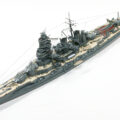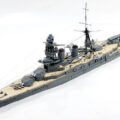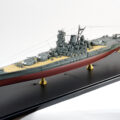
フジミ 1/700 日本海軍戦艦長門 プラモデルの完成品です。フジミの長門専用エッチングパーツを使用してディテールアップを行いました。
2010年製作
Fujimi 1/700 Japanese Navy Battleship Nagato plastic model finished product. Details have been improved using Fujimi’s Nagato exclusive etching parts.
Made in 2010
実艦解説
屈曲煙突時代の長門もご覧ください
アオシマ 1/700 日本海軍戦艦「長門」1927(屈曲煙突)完成品 AOSHIMA NAGATO1927
長門は41センチ主砲を搭載し26.5ノットという高速を発揮できる戦艦でした。速力は23ノットと公開され、実際の速力は秘匿されていましたが、関東大震災が起こった時、演習中の九州沖から壊滅した首都圏へ救援に向かう為最大速力を発揮したときに追跡してきたイギリス巡洋艦によってその速力性能は暴露されてしまいました。
二番艦の「陸奥」が竣工後にワシントン条約が締結され新しい戦艦が建造されなかったので、長らくの間連合艦隊の主力でありつづけました。長門・陸奥はアメリカのコロラド型、イギリスのネルソン型とともに世界最強戦艦のビックセブンと呼ばれました。
太平洋戦争までにいくどかの改装をうけ、太平洋戦争開戦時には連合艦隊旗艦でした。太平洋戦争の前半には前線には投入されませんでした。1943年には同型艦「陸奥」を謎の爆沈により失います。その後長門はマリアナ沖海戦に乙部隊の護衛として参加、その後捷一号作戦に参加、サマール島沖海戦で初めての主砲の対艦射撃を行います。
内地に戻った長門は特殊警備艦となり、高角砲などを陸揚げしマストなども撤去した状態で終戦を迎えました。終戦時航行可能な唯一の日本戦艦でした。
終戦後長門はアメリカ海軍に接収されビキニ環礁の核実験の標的艦となり、二度の核爆発を体験し、二度目の核実験の3日後の夜、長門は誰にも看取られる事なく沈没し、その生涯を閉じました。
Nagato was a battleship equipped with a 41 cm main gun and capable of demonstrating a high speed of 26.5 knots. The speed was disclosed as 23 knots, and the actual speed was kept secret, but when the Great Kanto Earthquake occurred, I tracked it when I showed the maximum speed to go to the devastated metropolitan area from off Kyushu during the exercise. Its speed performance has been exposed by the British cruiser.
Since the Washington Treaty was signed after the completion of the second battleship Mutsu and no new battleship was built, it remained the main force of the Combined Fleet for a long time. Nagato and Mutsu were called the world’s strongest battleship, Big Seven, along with the American Colorado type and the British Nelson type.
It underwent some refurbishment before the Pacific War and was the flagship of the Combined Fleet at the beginning of the Pacific War. It was not put on the front lines in the first half of the Pacific War. In 1943, the same type ship “Mutsu” was lost due to a mysterious explosion. Nagato then participated in the Battle of the Philippine Sea as an escort for Unit B, after which she participated in Operation Sho-go, where she fired her first anti-ship gun at the Battle of the Philippine Sea.
Nagato, who returned to the mainland, became a special guard ship and ended the war with high-angle guns landed and masts removed. She was the only Japanese battleship navigable at the end of the war.
After the end of the war, Nagato was requisitioned by the US Navy and became the target ship for a nuclear test at Bikini Atoll. After experiencing her two nuclear explosions, three days after her second nuclear test, Nagato sank without being seen by anyone, and she died her life.
キット解説
2010年に発売されたフジミのキットです。
甲板の幅やバルジ上端の解釈、更には主砲バーベットの形状(装甲板の追加で単純な円形ではないはず)及び主砲砲塔形状などに若干の疑問がありますが、上部構造物、特に煙突周りなどが大変良く出来ています。
This is a Fujimi kit released in 2010.
There are some doubts about the width of the deck, the interpretation of the top of the bulge, the shape of the main gun barbette (which should not be a simple circle with the addition of the armor plate), and the shape of the main turret. The superstructure, especially around the chimney, is very well made.
製作・塗装
フジミ純正のエッチングパーツを使用し、リールは汎用エッチングパーツです。ボート類の配置は強度なども考慮し説明書から若干変更しています。
サーフェイサーを吹いた後に基本塗装を行いました
舷側など 軍艦色5(SDEカラー)→軍艦色2(Mrカラー)
木甲板 リノリウム(赤褐色+オレンジ+黄橙色)→タン
リノリウム 赤褐色+オレンジ+黄橙色
スモークグレーでシャドウを入れてからつや消しクリアー、最後に空中線を張っています。
I used genuine Fujimi etching parts. The reel is a general-purpose etching part. The arrangement of boats has been slightly changed from the instruction manual in consideration of strength.
Painting: Basic painting was done after blowing the surfacer.
Warship color 5 (SDE color) → Warship color 2 (Mr color)
Wood deck linoleum (reddish brown + orange + yellow-orange) → tan
Linoleum reddish brown + orange + yellow orange
Smoke gray with shadow, then matte clear, and finally an aerial line.
完成品画像
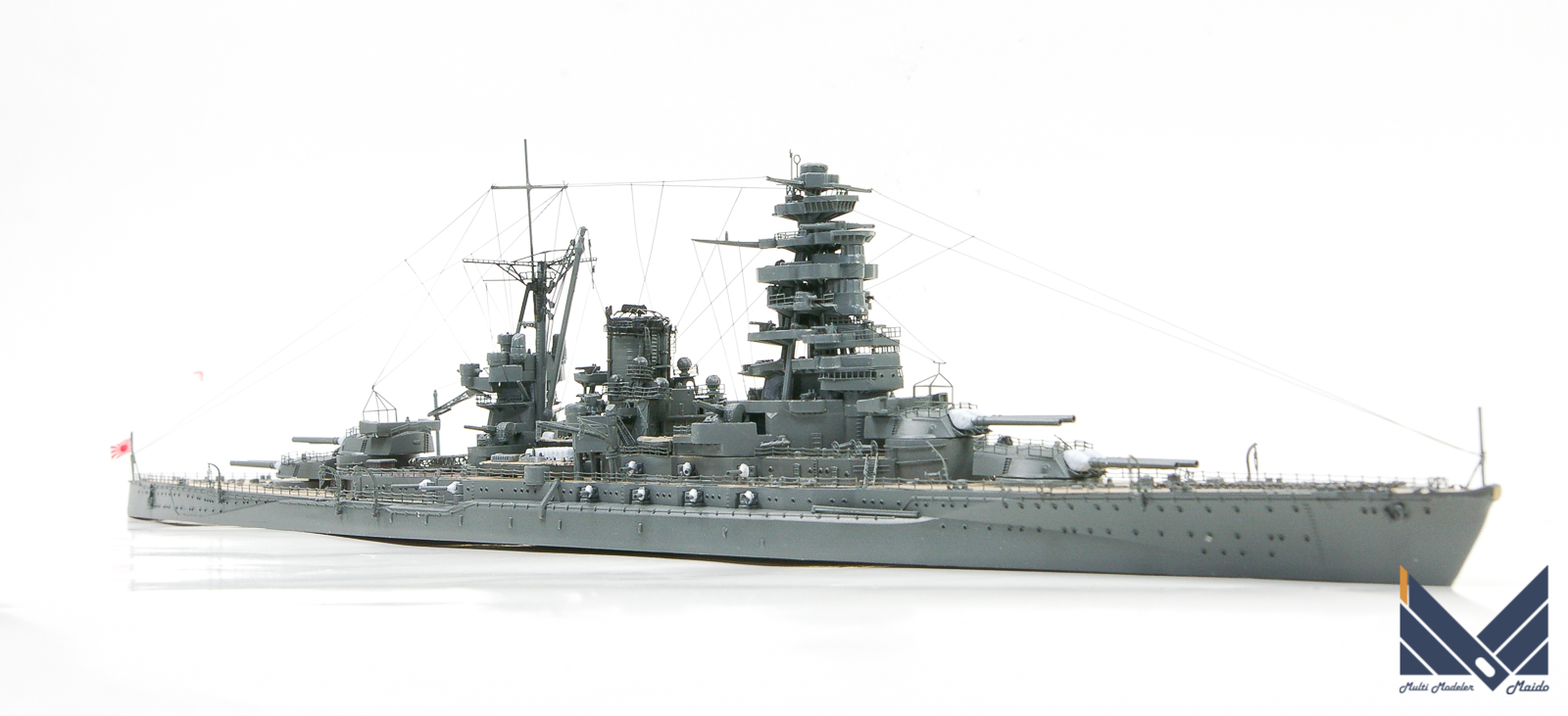
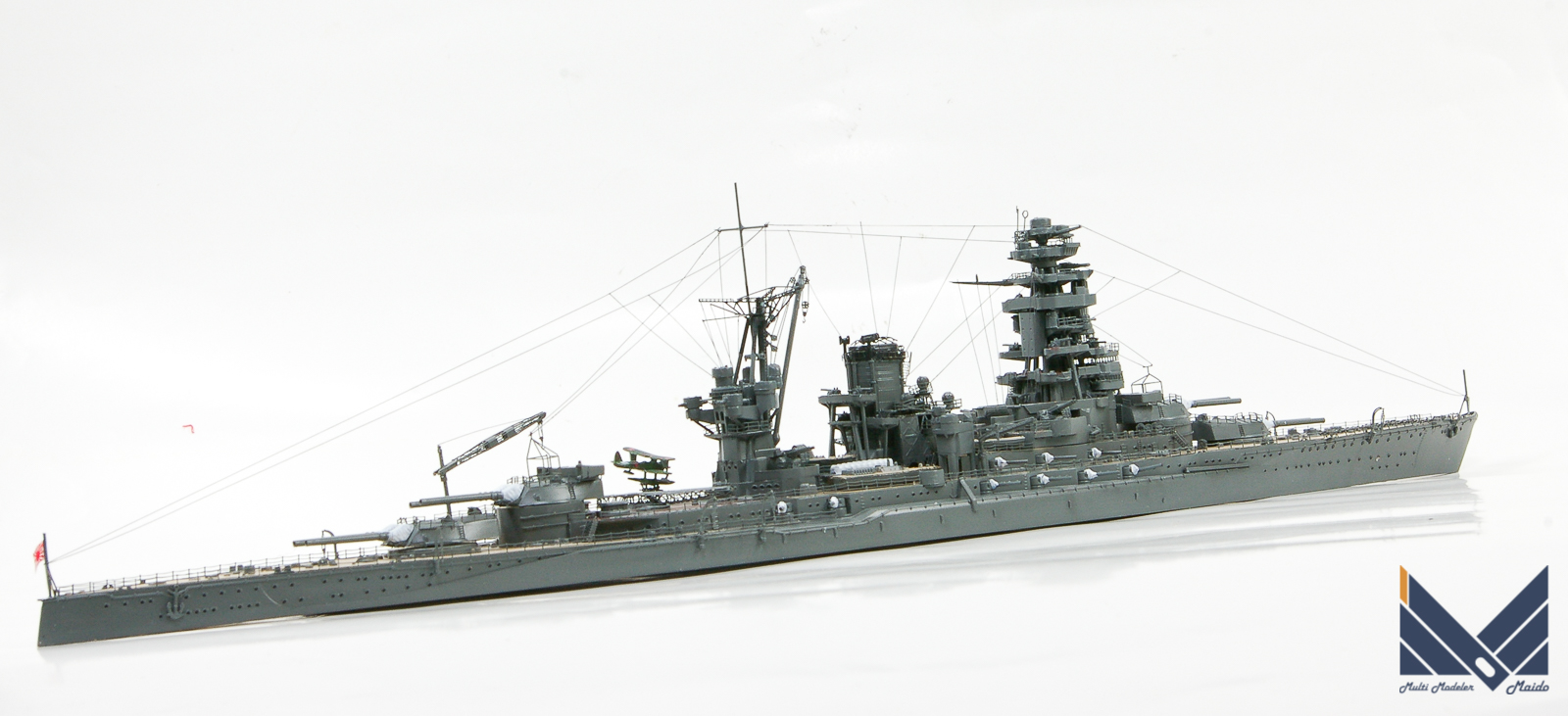
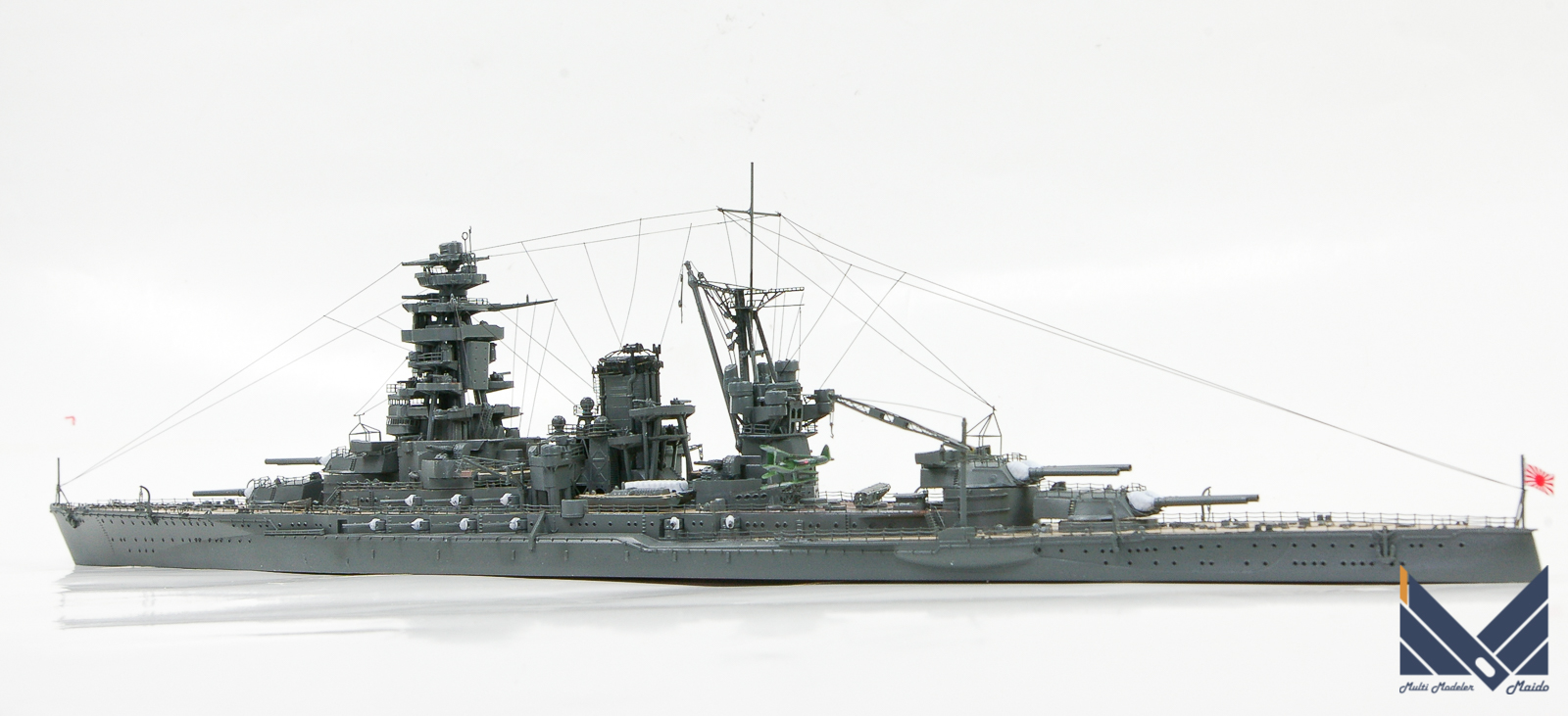

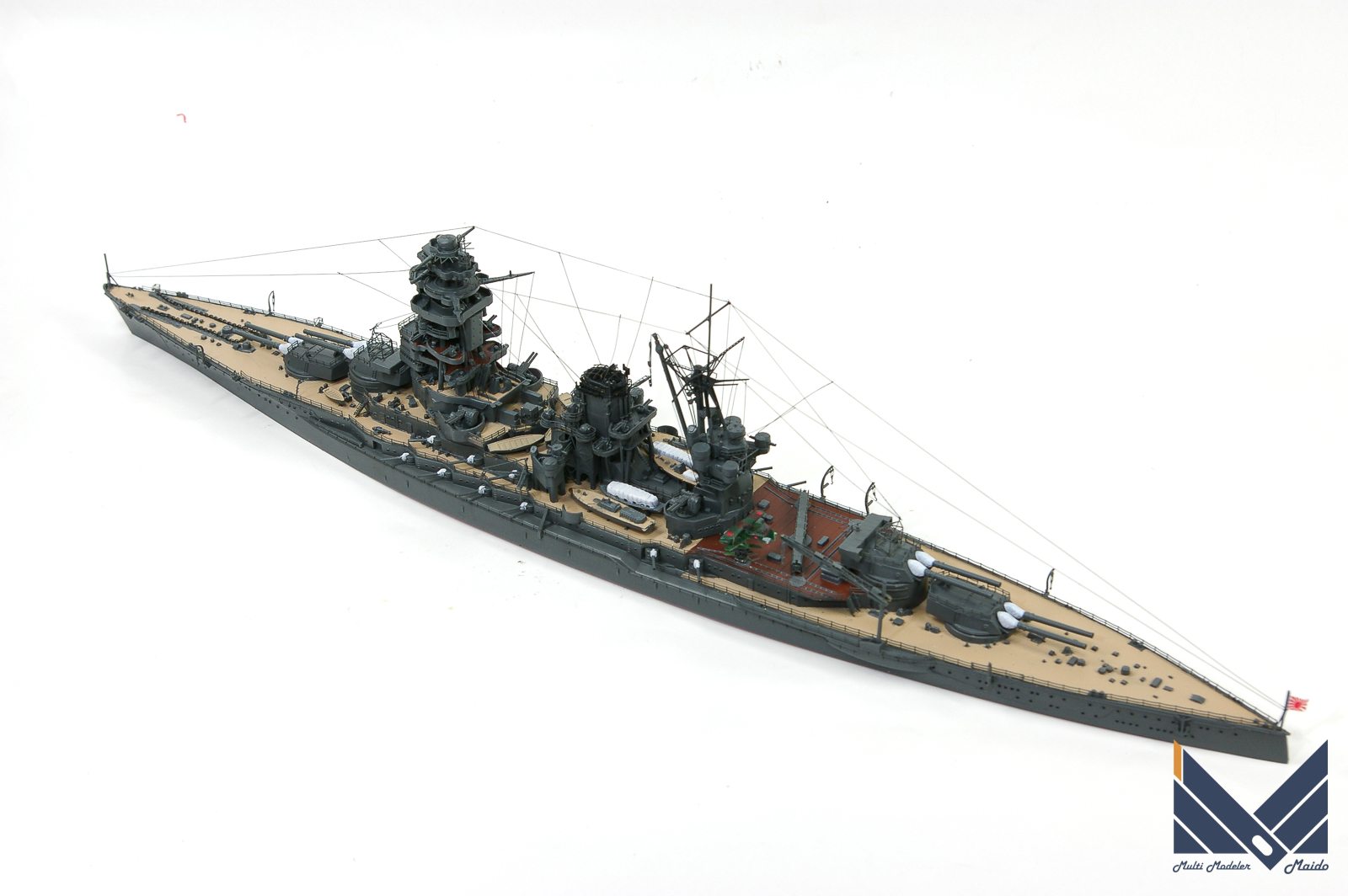
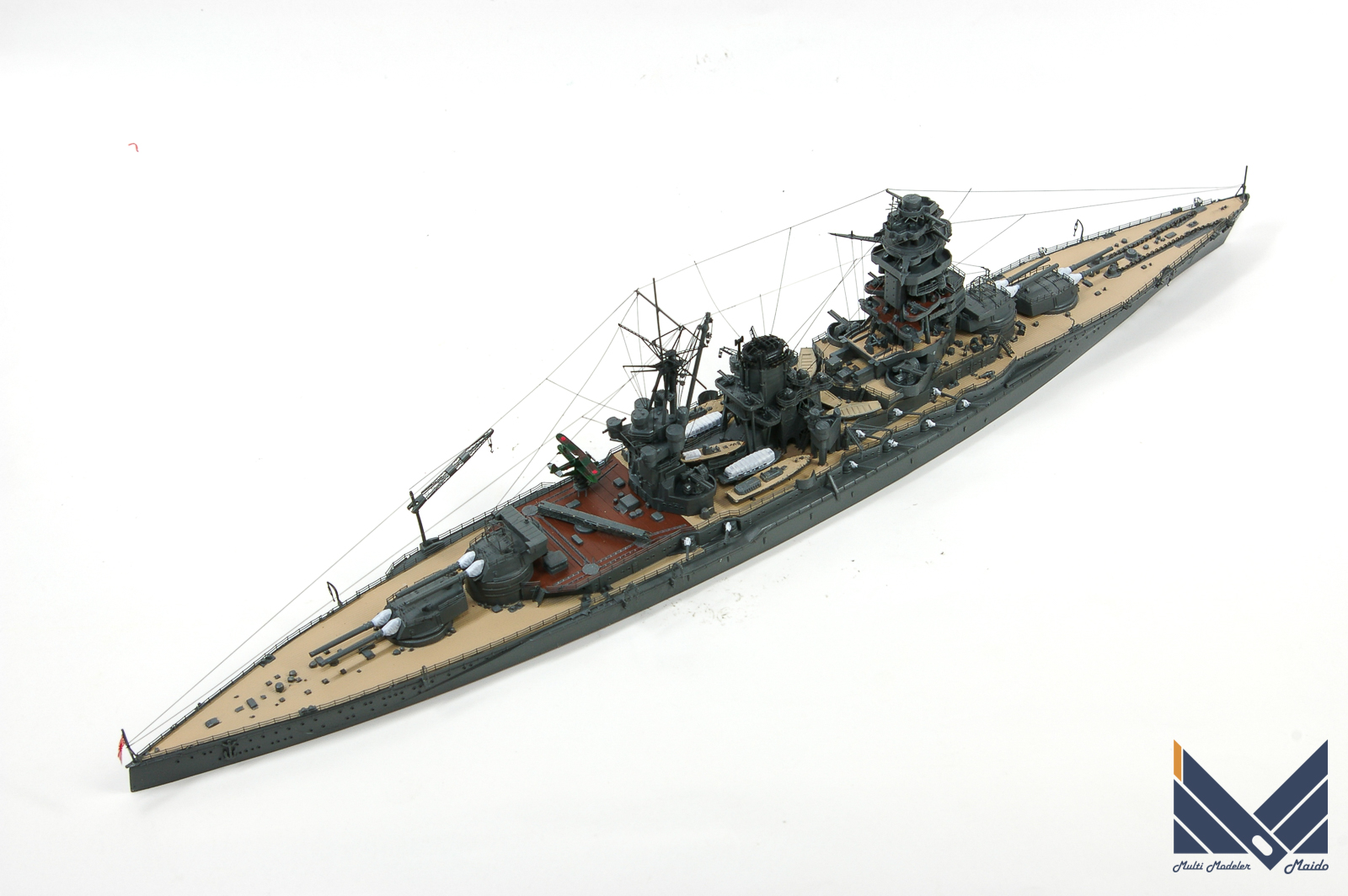

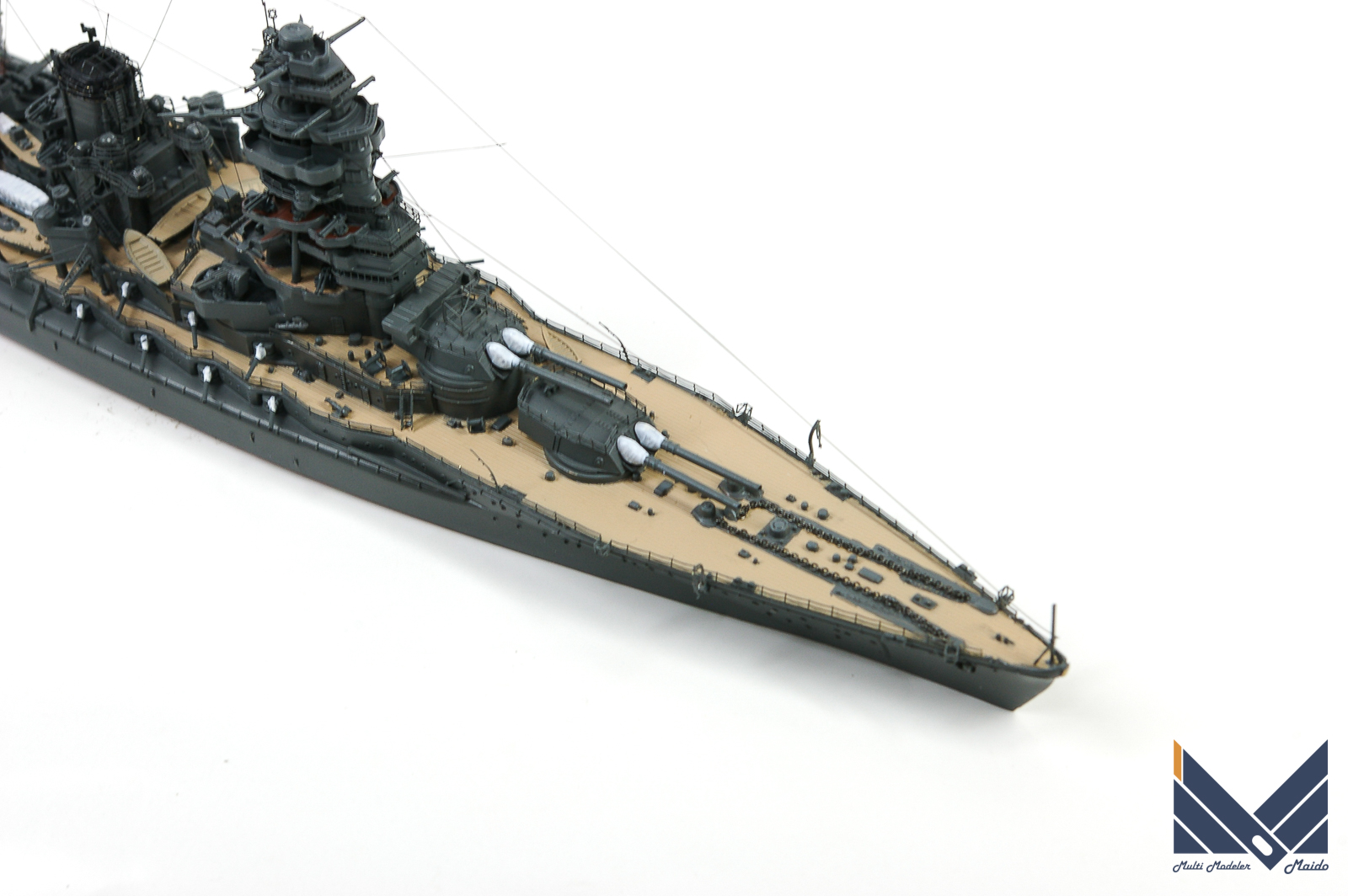
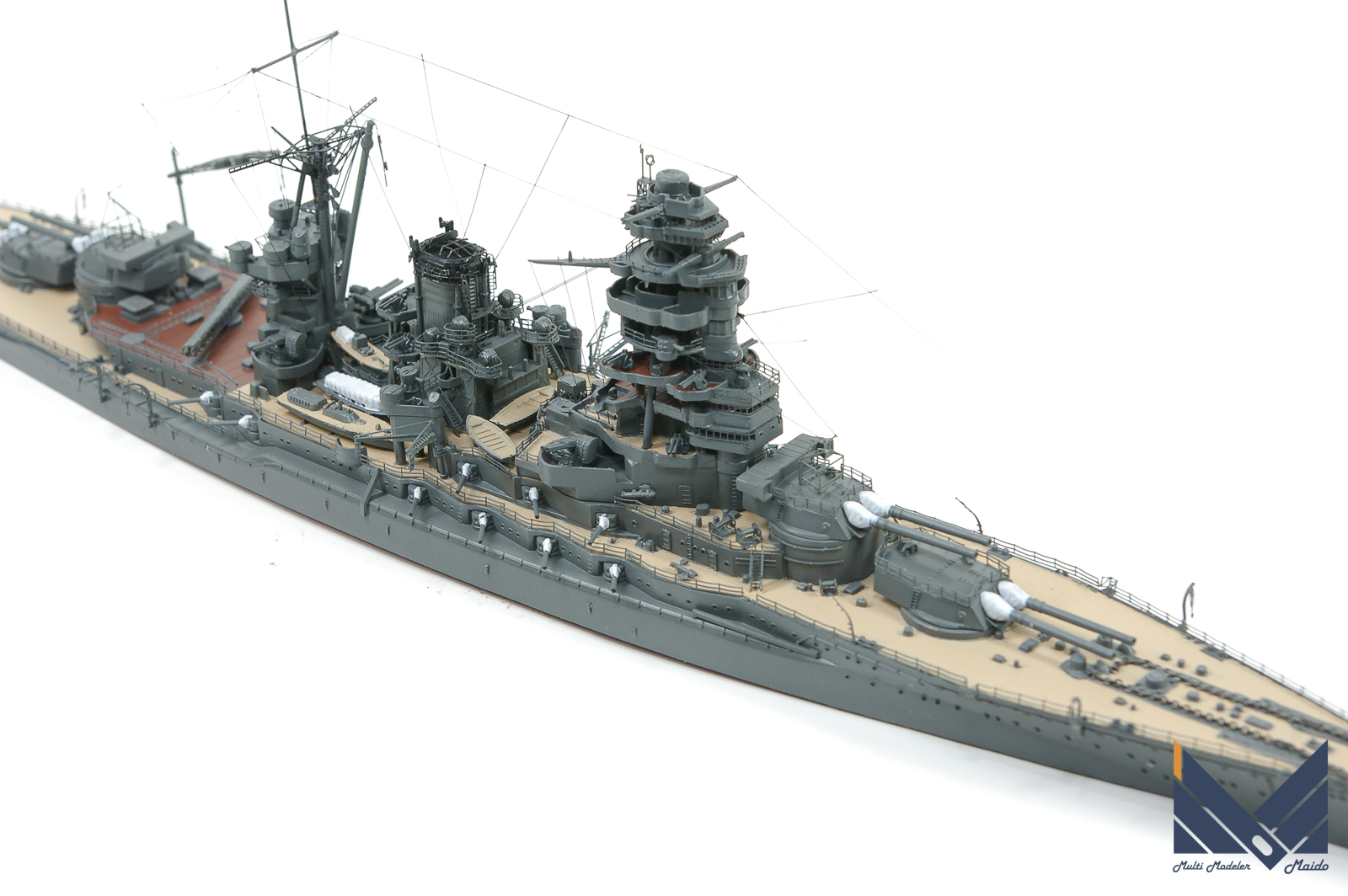
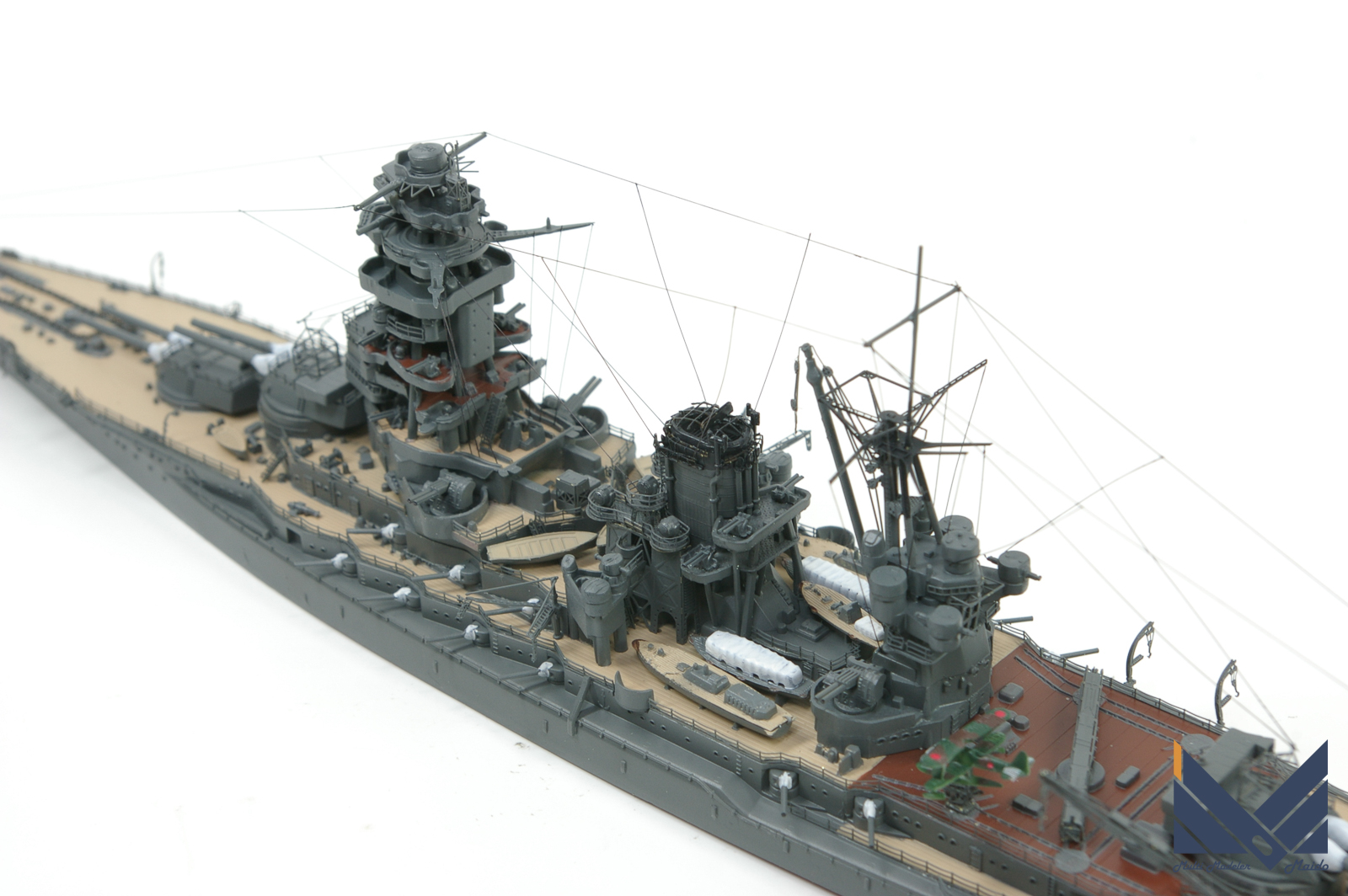
こちらの完成品もご覧ください
投稿者プロフィール
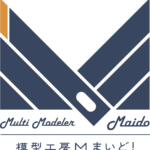
-
模型好き。カメラ好き。各模型雑誌で掲載多数。
艦船模型、飛行機模型、AFV模型などプラモデル全般の制作代行も承っております。「お問い合わせ」からご連絡ください。製作代行ご案内のページは現在概要のみを公開しておりますが、2025年6月現在納期はご相談になりますが、制作代行可能です
https://maidoworks.com/seisakudaikou/
最新の投稿
 お知らせ2025年11月8日プレオープン記念キャンペーンのお知らせ
お知らせ2025年11月8日プレオープン記念キャンペーンのお知らせ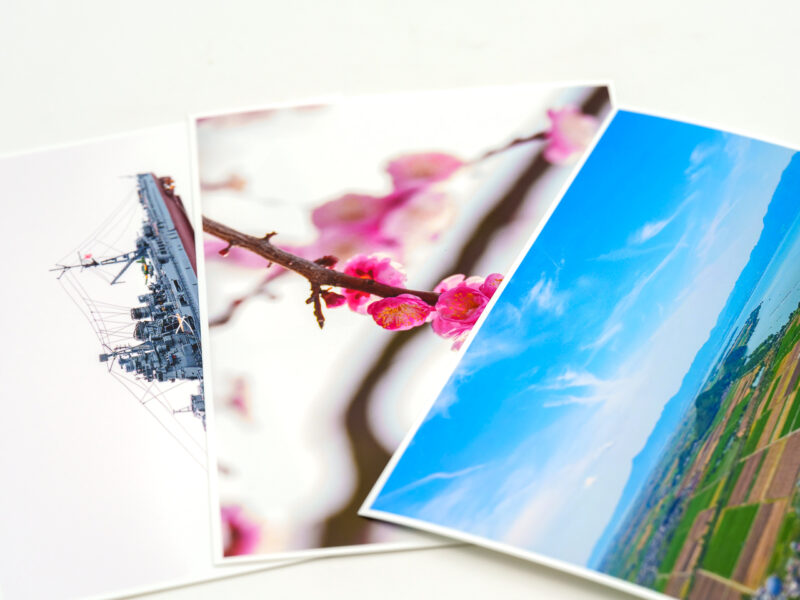 お知らせ2025年11月8日プリントサービス プレオープンのお知らせ
お知らせ2025年11月8日プリントサービス プレオープンのお知らせ 製作記アーカイブ2025年11月5日製作記はYouTubeへ移行しました
製作記アーカイブ2025年11月5日製作記はYouTubeへ移行しました 自動車模型完成品2025年9月13日ハセガワ 1/24 ホンダ・シビック SiR2 完成品 HONDA CIVIC HASEGAWA
自動車模型完成品2025年9月13日ハセガワ 1/24 ホンダ・シビック SiR2 完成品 HONDA CIVIC HASEGAWA




